The best bike trainer 2020 – 7 smart trainers for Zwift & co. on test
Do you want to liven up your training by riding a turbo on Zwift? Or would you rather have a structured training plan on another type of smart trainer? There’s an option for almost everyone on the indoor bike trainer market. From bike rollers to the KICKR BIKE, we’ve tested seven different indoor trainers.

Spoiler alert: this is not a comparison test for number nerds or data fetishists. Instead, it’s a real-world approach to a topic that is based on people, not robots. In order to be able to help recommendation different options to different riders, this group test compares smart turbo, direct drive and roller trainers, as well as the KICKR BIKE.
When the weather outside gets worse and the motivation for riding drops, there are numerous ways out of the rut. One of them: escaping inside. The cold and wet season is the perfect time to work on your fitness and prepare for the Gran Fondos and challenges ahead of you. But not everyone is solely focussed on keeping fit. Some of you just want to have fun on your bike without freezing off your ass in the winter. For different aspirations and desires, there are different ways of approaching training. From entertaining online “games” like Zwift designed to simulate riding outdoors as naturally as possible and where you can now even steer virtually in-game to professionally-oriented apps like Sufferfest, pretty much all desires are catered for.
Even the UCI now recognises indoor cycling as an E-Sport and it’s now a discipline of its own with the first UCI E-Sport World Championship in 2020 on Zwift. You can even cater to your aesthetic sense indoors too, with Rapha recently releasing an indoor training collection, that has given indoor training more of a focus as well as more style.
All turbo trainers in review



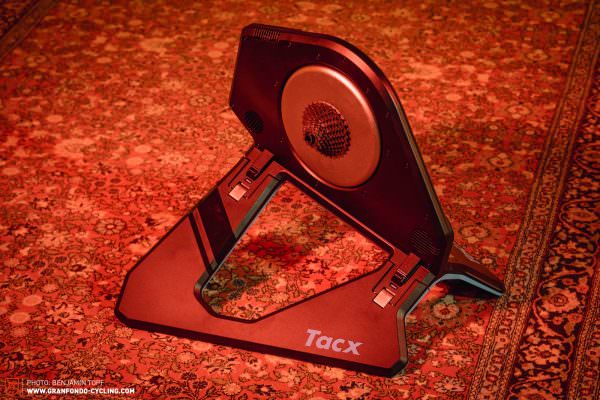



What is a turbo, direct drive, smart or roller trainer?
There are many different ways to cycle indoors, with the approach of different bike trainers fundamentally different. That’s why there are also so many terms and identifiers.
With a classic turbo trainer, the rear axle is clamped in place and the tire sits on a metal roller. This roller is driven by the tire and the resistance is controlled electronically or mechanically. This can usually be changed during use with a remote control. If the bike trainer has ANT+ or Bluetooth connectivity, it is also called a smart trainer. Warning: there are still models which aren’t really smart and have only a limited range of functions, despite being referred to as smart trainers. The disadvantages of turbo trainers include the noise as well as wear on the tire and potential for it to slip on the roller. That’s why it’s recommended to use a specific turbo training tire. The noise produced by older turbos has already led to one or two arguments with neighbours, though newer models are more suited to domestic use. It’s also during high intensity sessions that the traction on the rear wheel can suffer, meaning that turbos can’t match the ride feel of direct drive trainers. Because of the low price and simple assembly, turbo trainers are the most widely used method to train indoors with your own bike. Slightly confusingly and perhaps for historic reasons, the term turbo trainer has carried over to more modern designs too.

A direct drive trainer requires you to remove the rear wheel. Instead, the flywheel is driven directly by your chain, with a cassette mounted to the trainer taking the place of your wheel. This allows for continuous and direct resistance and usually also results in lower noise levels than with traditional turbos.The current models all have a Bluetooth and ANT+ interface and can be connected to a smartphone, tablet or computer for your virtual group ride on Zwift. On almost all models, Zwift and similar software can communicate directly with the trainer to vary the resistance of the flywheel, which means that the elevation profile of your virtual ride matches how much power you have to put in. This is the so-called dynamic ERG mode. However, the resistance can also be overridden by the user manually. In this Level mode, the rider has full control and you can ride according to prescribe resistance levels.

On a (smart) roller, you whole bike sits on three rollers, without anything to hold it up other than you riding. You need good control of your bike, good coordination, focus and probably a bit of practice. Once you’re up to speed, it’s a lot of fun and completely different to a fixed bike trainer. In addition training may be less monotonous than other trainers, time seems to pass more quickly, and your core also gets a workout. At the same time your training will likely be more tiring due to the focus and adrenaline and might lead to exhaustion more quickly. Don’t be too harsh on yourself at the beginning! If you want to get started, we recommend setting the rollers up in a doorway while you get used to balancing. Smart rollers can of course also be connected to Zwift and the like via Bluetooth or ANT+. For high intensity interval training on Sufferfest or TrainerRoad, you should have a bit of experience riding on rollers!

There’s also one or two “complete solutions” on the market. While some models look like a traditional spin bike, they have little in common. Instead, these trainers are completely customisable indoor bike with drop bars and tunable gearing, with adjustable reach, stack, seat angle and saddle height. They are undoubtedly luxury solutions that will suit constant or regular use by imitating the ride feel of a road bike as realistically as possible. However, they are much harder to stow away than a smaller trainer. However, if you want to sweat indoors all year long, the Wahoo KICKR BIKE or the Tacx NEO Bike Smart could be an interesting option.

Why should I ride my bike inside when I can just get out instead?
Quite simply, it might be the path of least resistance for many people out there! But fun aside, there are several arguments that speak for indoor training. That said, there are just as many to get out on the road as well. We don’t want to take sides here and feel that everyone should just do what they want! In the end it depends on where you live, your motivation, living situation, neighbours, weather and countless other factors.
Pros
- Safety: when it gets icy outside and black ice makes road conditions unpredictable, riding your home trainer is a safe bet. In addition, it becomes increasingly difficult to finish longer rides by daylight.
- Time savings: if you have to layer up for your winter rides, you’ll know that it takes quite a while to prepare. You indoor trainer is set up in just a few moments.
- Base fitness: those who want to maintain their base over winter and want to do low-intensity training will quickly freeze in the winter. It’s hard to top the comfort of being at home.
- A question of price: if you don’t yet have a complete set of kit for winter you might be faced with a considerable investment: winter bibs, a breathable and windproof jacket, extra layers, overshoes… the list could go on. All this quickly adds up. A home trainer could even be cheaper than all these items together.
Cons
- Reality: no matter how well a home trainer might simulate the real world, it will never match reality. A spectacular view after an intense climb or the mid-ride espresso in a dreamy café are the exclusive domain of riding outdoors.
- Dependence: the more technology involved, the higher the potential for things to fail. An interrupted internet connection, a family member who trips over the power cable – the list of possible malfunctions is long.
- Loads on the frame: so far, only a limited number of manufacturers have explicitly approved their frames for use with trainers. If in doubt, it’s worth talking to your bike shop or distributor.
- Happy neighbours: vibrations, noise, you panting hard on the trainer. Will you need to put down extra mats to dampen the sound or agree a time slot to train? You’ll likely need to communicate with your neighbours and be open about your training!
No one knows you haven’t shaved your legs in a virtual riding world!
Who is indoor training for?
We see two primary target markets. For those who want to do structured training and those who just want to have fun. Of course there’s a fluid boundary between the two. If you’re doing structured training, indoor trainers are more of a means to an end. They allow you to train with purpose, suffering indoors so that you can have more fun outdoors and be prepared for the challenges of the next season. We also see such structured training as perfect for rehabilitation after an injury. At the other end you have the rider wanting to have fun. This approach is about being comfortable in a warm apartment without having to face the risks of winter riding. If you’re training for fun, you might not need to set goals and instead just want to stay fit and active. The gamification and technological aspects are no doubt also of interest to many riders.
Zwift and co. – which software do I choose?
Let’s be clear. You don’t need a particular software to make the most of your indoor training. But choose carefully and you can make your riding experience all the more pleasant, productive or exciting, depending on what you’re looking for. Most apps offer trial subscriptions so you don’t have to commit to one straight away.
Alongside the smart trainer specific options offered by manufacturers, Sufferfest, Zwift and TrainerRoad are the biggest players on the market. For our test, we took a closer look at Sufferfest and Zwift as these put a higher emphasis on fun.

Zwift is first and foremost a game in which you ride around a virtual world and is reminiscent of early 2000s open-world games. You can level-up and unlock bonus options like jerseys or bigger maps to ride on. There’s also a significant social component and the online races and group rides make the training go by faster. For € 14.99 a month, Zwift want to offer lots of fun on the bike. Recently, Zwift also introduced the ability to navigate through the virtual world with your smartphone. Zwift also offer training plans allowing you to take on long term goals for events like Gran Fondos or complete standalone sessions. While the training plan are generated based on your FTP, they aren’t as professional or personalised as on Sufferfest. The most recent update of the Zwift platform sees the manufacturer expand its offering for mountain bikers. It will be exciting to see how the software develops in the coming years.

Sufferfest isn’t a game but a program that is focussed on training and stands out with professional coaches and tutorial videos. Power, anaerobic capacity, maximum aerobic power and FTP values are the focus and get calculated based on the 4DP test. As you might guess, this software speaks its very own language to users. Your training gets customised according to your own performance and is tailored for you. So that your training sessions don’t get boring, Sufferfest motivates you with videos and music. In addition, there are videos covering mental training and yoga too. For $ 12.99 (approx. € 11.70) you’ll get a structured and effective training tool, without having to sacrifice too much fun.
What’s important? The most important features of a trainer
The different options in our group test couldn’t have been more varied: an old school turbo trainer from Relaxdays that we ordered based on good Amazon reviews faced up against the high-end Wahoo KICKR BIKE. Rollers faced direct drive trainers. But what are the most important factors for a bike trainer?
The noise produced by the direct drive trainers in the test is at an incomparably lower level than the classic turbo trainers. Any background noise is mainly due to the chain rather than the trainer itself and changing gears is by far the loudest sound. That means direct drive trainers will hardly bother even people in the next room. However, the Elite Direto X is louder than the Tacx Neo 2T Smart and the Kickr Core in a direct comparison. While sprinting, the Tacx Satori Smart turbo, Elite Nero roller and Elite Direto X are similarly loud, even if the noise produced is very different and your tolerance for each may vary. Apart from the cheap Relaxdays turbo, all the trainers in our test produced an acceptable level of noise that will be fine in your rented apartment. The times when your flatmates will jump up to strangle you like Homer Simpson because you want to suffer inside should be long gone.
Weight is important if you want to be able to store your smart trainer quickly and easily. However, a low weight also means a lightweight mechanical or virtual flywheel, which can impact negatively on the natural ride feel. You should try and find the right compromise. 18 kg isn’t uncommon for a direct drive trainer which rides well. Classic turbo trainers are lighter and take up very little space, but they have other disadvantages that we will discuss in a bit.
In terms of interactivity and connectivity hardly any manufacturer shows any significant weaknesses, meaning that this shouldn’t be a major factor in your purchasing decision. Apart from the Relaxdays turbo trainer, all the trainers can be connected with computers, tablets or smartphones via Bluetooth or ANT+. Zwift and other software can then also control the trainer. Apart from the Tacx Satori Smart and the Relaxdays turbo trainer, that allows the software to emulate climbs and descents by modulating the resistance of the trainer. The Tacx Satori Smart shows on Zwift how many watts you’re putting out, but you’ll need to adjust the resistance manually.
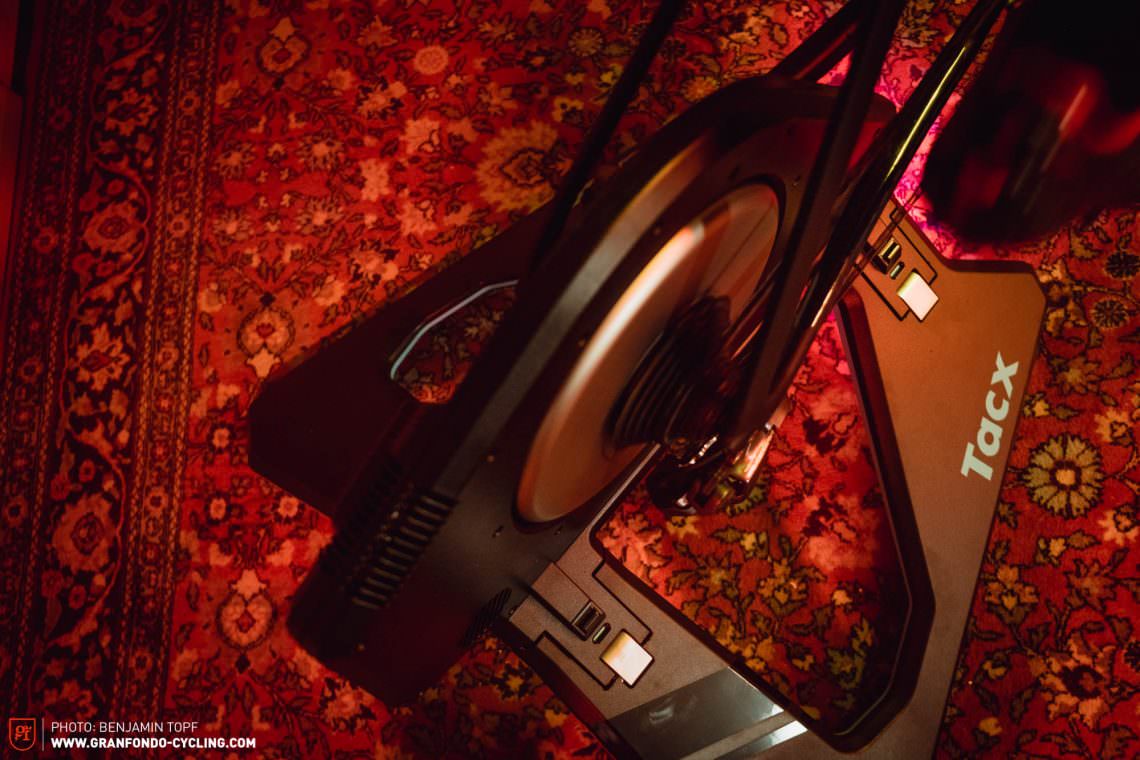
The ride feel of a direct drive trainer largely depends on the size of the mechanical or virtual flywheel. A good trainer manages to effectively simulate freewheeling, which is why you’ll often automatically reach for the brake lever before getting off your bike at the end of a training session. Flex is important in a trainer but you have to look at the complete system. A flexy frame on a flexy trainer is just as bad as too stiff a frame on a too stiff trainer. The right combination produces realistic levels of compliance that allows you to emulate your natural movement patterns while sprinting or pedalling. During the test, direct drive smart trainers were clearly superior to the turbo trainers, not only because pedalling is smoother but also because they allow the bike to tilt slightly. The most natural ride feel can be had on rollers.
If you pedal in the saddle a lot, you won’t need to worry about the stability of the trainer. However, if you want to ride intense sprints out of the saddle you’ll need to make sure the trainer is well-supported. The flex of the trainer also has an effect on how quickly it will start to tip from side to side. The KICKR BIKE is by far the most stable trainer in the test and has limited lateral flex. However, the ELITE NERO rollers are in a different league. Because forces are transmitted in a very different way, it’s almost impossible to get them to wobble. The Tacx NEO 2T Smart impressed our testers with its secure stand combined with a pleasant level of lateral flex.
As you have seen, the focus of our test is not on the accuracy or maximum power ratings of the individual options. Why not? You’ll find out next.
Why don’t we care about accuracy?
Regardless of how exact your trainer is, relatively speaking it will always show you your stats. As an enthusiast, that won’t hold you back from training. Even if the accuracy of your trainer varies a little, in the grand scheme of things the error is negligible. Improving on an “inaccurate” starting value is still an improvement. Even without completely accurate values you’ll still notice improvements out on the road.

Improvements relative to your own performance are much more valuable and important than being able to compare yourself one to one against others. It’s human nature to want to compare your performance with others and if you want to do that please do. Pin on your race plate and take part in a real race, against real riders on a closed course. 😉 All we want to say is don’t let yourself be misled by marketing claims or be seduced by the negligible improvement in accuracy of product Z over X or Y.

If your trainer is controlled by Zwift, it’s not about how quickly resistance changes but how naturally. If you’re doing power based training, you’ll find enough trainers in the test field that offer high enough ratings. However, if you’re not chasing the watts in real life, why should you when you’re riding on Zwift.

At the end of the day we don’t earn our keep with cycling and it’s our hobby, so the tiny details won’t actually impact our experience. A fun fact for those who are sceptical Chris Froome won the 2015 Tour de France with a one-sided Stages power meter that at the time was widely considered to be less accurate than the gold-standard SRM power meter. And frankly, if Vincenzo Nibali stayed strictly in his zones during attacks, he would hardly create the spectacles that we all enjoy so much.
How easy does a trainer need to be to move?
Hardly any of us have an extra room for training and even fewer of us have an extra bike for turbo training. If indoor training is to result in a change of habit rather than a short term solution that will bite the dust after three weeks, you need to find a realistic long term setup for training. That’s much more important than to split hairs over 1.5% or 1% power accuracy. For many users, weight will play an important role, though a lighter trainer isn’t automatically a better one. A heavier flywheel is important for a more natural riding experience, so you should aim to strike a compromise and be conscious of what you want from your smart trainer and where you can put it. It’s not just the weight, but also how compact it is when stowed away that can be the deciding factor. A collapsible trainer might fit under a bed or into the cupboard more easily than one who’s volume can’t be changed.
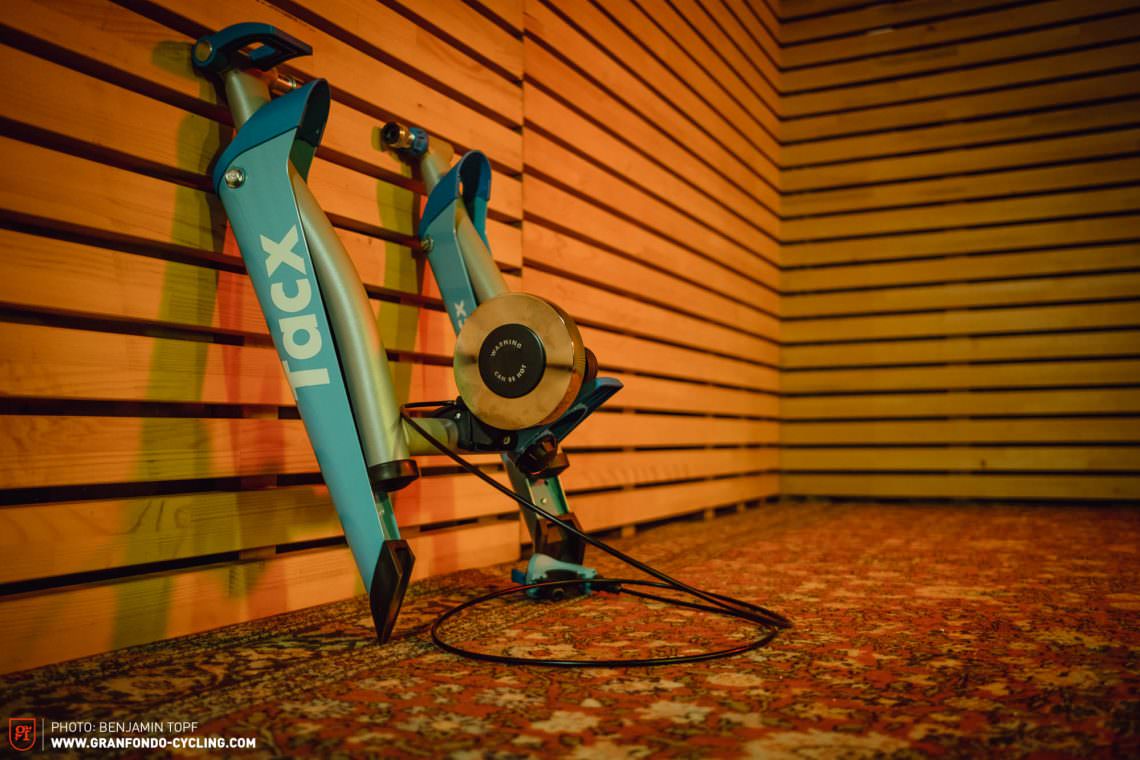
The installation and assembly of all the different trainers in the test is quick, so the choice of system is not the most important. Obviously, rollers just require you to throw your bike on top but the quick release systems on classic turbos is quick to use too. Fit a spare cassette on your direct drive trainer and setup hardly takes longer than it does to start up Zwift.
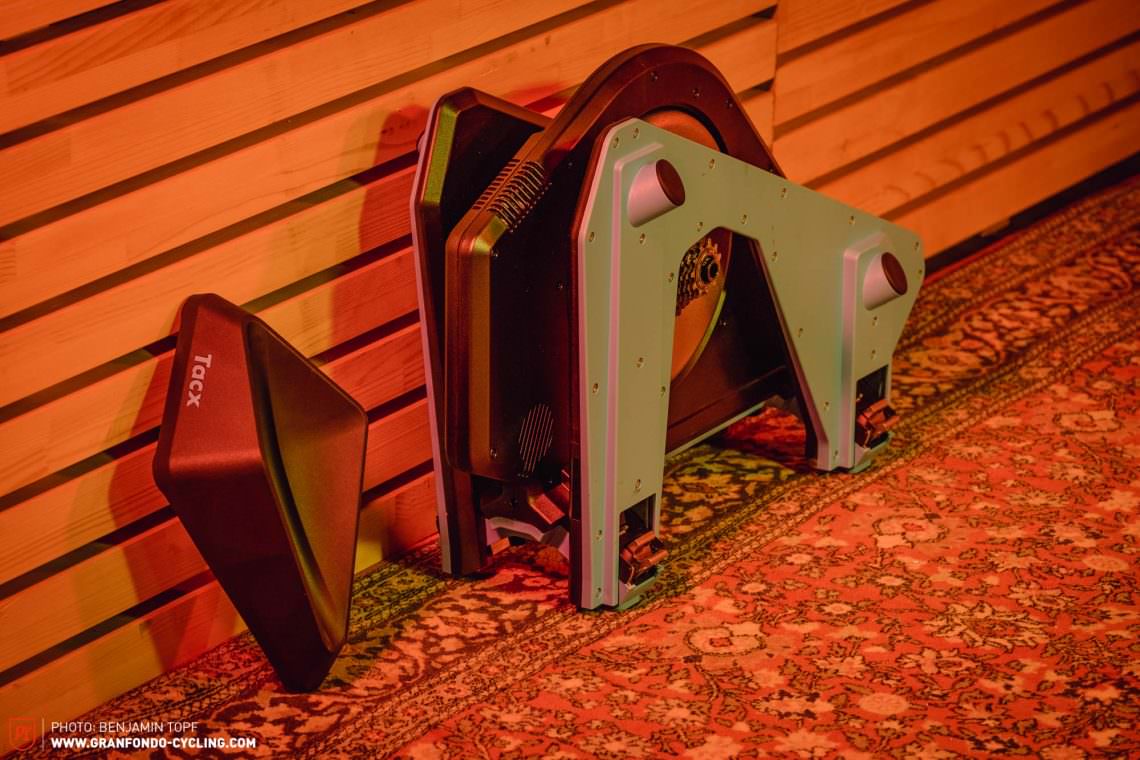
If you are thinking about purchasing a Wahoo KICKR BIKE you will need to have a permanent place for it. While it can be easily moved around, you’ll still need to have the space to store it. Why not have a dedicated training spot and leave it there?
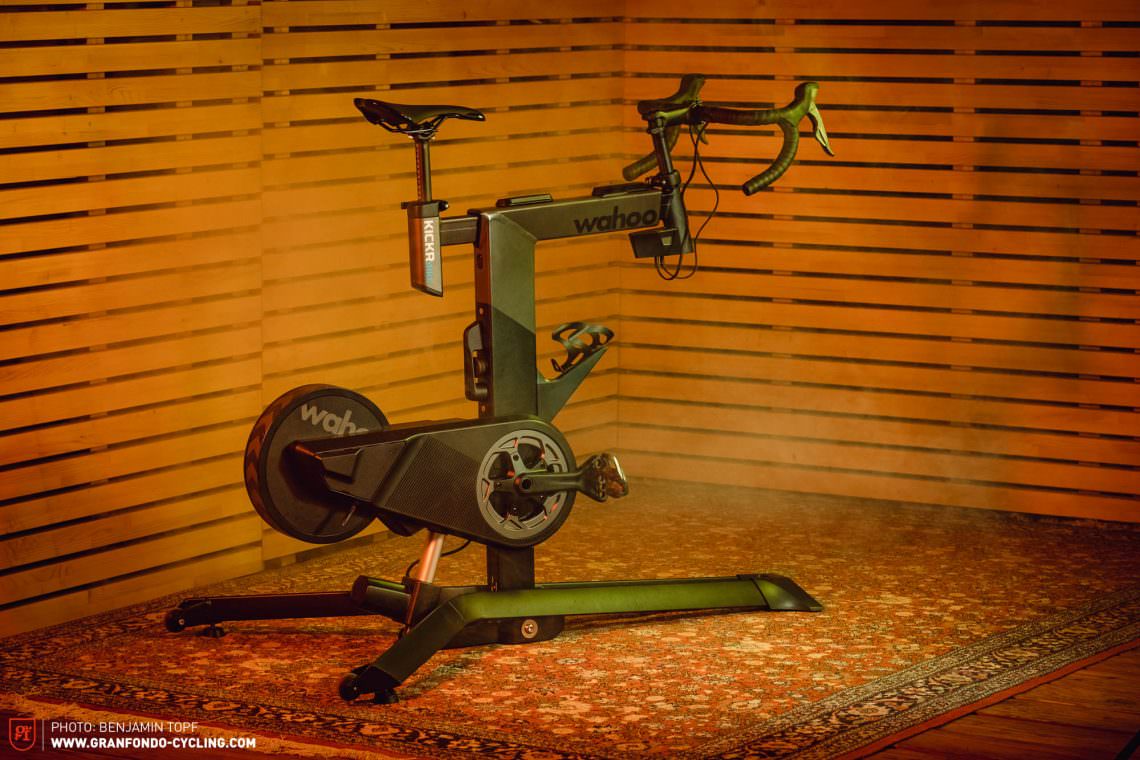
What do I really need for the perfect home training setup?
With some imagination it’s possible to save money for your setup without having to lose out on functionality. A mat and towel to protect your floor and the bike from sweat are pretty much mandatory. If you want to use an app, you’ll need a laptop, television, tablet or smartphone and a high table to put them on. It doesn’t have to be stylish, just quick to put together. A fan is also sensible. It doesn’t have to be integrated with the Wahoo HEADWIND and can be a cheap option to keep you cool when working hard. If your riding position is too level, you could put some books under the front wheel. However note that the less individual items you use, the less opportunity there is for things to slip. One more detail. Don’t forget the brake block for your disc brakes so that the pads stay spaced and you can reinstall your wheels without any issues. Mount your phone to the bars and you can use the accelerometer to “steer” on Zwift. You’ll need a phone mount, or just an old case and some double-sided tape. 😉 You see, with a little ingenuity, the odd bodge or two can help complete your setup.



If you don’t want to spend time cobbling things together, there are ready-made solution available. There are various sensible options that will let you dive deeper into the world of Zwift with more intensive simulation. You can mount the front end of your bike into the Wahoo KICKR CLIMB, which lifts and lowers your bike to simulate climbs of up to 20% and descents of 10%. During long training session, the change in position isn’t just pleasant but also contributes significantly to a realistic ride. If you live in a flat region and want to train for a marathon in the Dolomites, this is the perfect tool to work on your hill climbing position. An additional example is the KICKR HEADWIND which adjust a fan based on your riding speed or heart rate. In the end, these are luxury option that can increase the fun and realism, but don’t actually change the performance of your smart trainer.
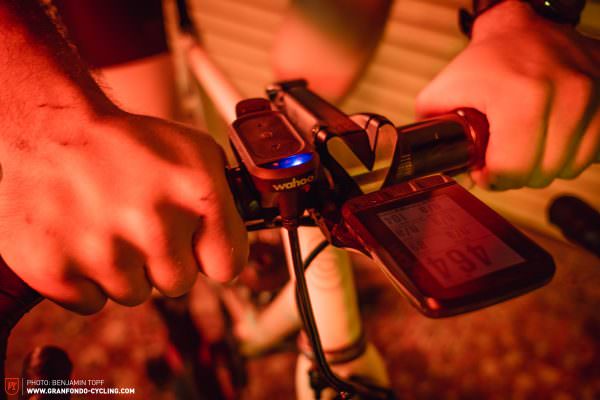

Does my bike fit this bike trainer?
Most direct drive trainers are fitted with a Shimano freehub as standard, which is compatible with all current 8- to 11-speed Shimano (and some SRAM) drivetrains. For SRAM XD or XD-R and Campagnolo cassette, as well as 12-speed drivetrain, you’ll generally have to get a separate adapter. If you want to use your AXS drivetrain on your direct drive trainer you’ll also need an adapter. Some direct drive trainers in our test also had unforseen compatibility problems – during testing, the derailleur cage of a 11-speed Shimano drive hit both the Elite Direto X and Tacx NEO 2T Smart when in the lowest gear while using bikes with 135 mm rear ends. In addition, disc brake equipped road bikes might also have some problems. In particular, 135 mm quick release bikes had some issues with the Tacx NEO 2T Smart. Adapters for 130/135 mm quick release and 142/148 mm thru-axles are almost always included with direct drive trainers, the only exception being the Elite Direto X where the 148 x 12 mm adapter is available separately. To be doubly sure about compatibility you should contact the manufacturer directly. Tacx actually provide a compatibility list for the NEO 2T Smart. We had a very good experience with the Wahoo KICKR CORE, where we had no problems with either road or mountain bikes. We recommend fitting a spare cassette to your home trainer, which will save time if you want to take your bike for a spin outside.
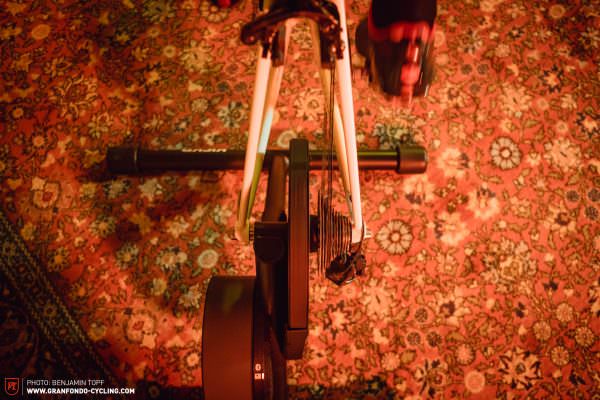


For classic turbos, a quick release rear axle is usually required. If this is available, the compatibility is almost unlimited. Mountain bikes can also be used if you have installed a slick trainer tire beforehand. Some manufacturers offer corresponding adapter solutions for bicycles with thru axles.


Rollers offer few restrictions regarding compatibility as long as the wheelbase of the bike fits the trainer. Slick tires should be used so that the rolling noise and resistance is kept to a minimum. With an appropriate tire your gravel bike can also become an indoor training device. Of course you can also use your mountain bike if you want to test how durable the tread profile is 🙂

Is my road bike approved for use with a bike trainer?
We can’t comment individually here. The scope in terms of bikes is is too large and the answers would likely be too disturbing! The fact is that some manufacturers approve their bikes for use with trainers and some don’t. If you want to be safe, visit the homepage of your bike manufacturer or contact them directly. For example, Canyon only recently approved their gravel, road and mountain bikes for turbos and smart trainer but other manufacturers haven’t come quite as far. If you don’t want to fit your precious carbon bike into a smart trainer because it’s not approved for it, then be warned that modern direct drive trainers are designed for 8- to 12-speed drivetrains. That might leave the old, used 70s race bike you had in mind for training incompatible or needing an upgrade. Alternatively, rollers result in similar loads put on your bike to riding outdoors, so there’s nothing to stop you using your bike here.
The test field
| Model | Type of Trainers | Weight | Price |
|---|---|---|---|
| Elite Direto X (click here for the review) |
direct drive trainer | 14.98 kg | € 729 |
| Elite Nero (click here for the review) |
roller | 19.18 kg | € 679.99 |
| Relaxdays Rollentrainer (click here for the review) |
turbo trainer | 8.18 kg | € 79.90 |
| Tacx NEO 2T Smart (click here for the review) |
direct drive trainer | 22.01 kg | € 1,299 |
| Tacx Satori Smart (click here for the review) |
turbo trainer | 7.78 kg | € 249 |
| Wahoo KICKR BIKE (click here for the review) |
smart bike | 42.39 kg | € 3,299 |
| Wahoo KICKR CORE (click here for the review) |
turbo trainer | 18.48 kg | € 799 |
Tops and Flops
Tops

The design of the KICKR CORE is compatible with almost every bike – chapeau Wahoo!

Even if you can make almost any trainer wobble during an all-out sprint, none of them felt like you were about to fall over.

The flex of the Tacx NEO 2T Smart results in a very natural feel that no other direct drive trainer can match.

Apart from the cheapest option in our test, the noise produced by all the trainers was surprisingly low. There have been enormous developments here in recent years. Modern indoor trainers have little in common with their deafening ancestors.

This kind of system has been around for a while and the ride feel continues to be great. Combined with Zwift, the realism is unbeatable. But be careful: practice makes perfect!
Flops:

The design of a smart trainer shouldn’t ignore compatibility. Some bikes don’t fit the Tacx NEO 2T Smart due to its design and 140 mm flat mount brakes can contact the trainer. Both the Elite Direto X and Tacx NEO 2T Smart sometimes interfere with long cage 11-speed derailleurs in the lowest gear.

During an all-out sprint the Direto X goes from static trainer to wandering around your apartment. The three legs offer a very stable platform when in the saddle, but leave something to be desired when sprinting out of the saddle.
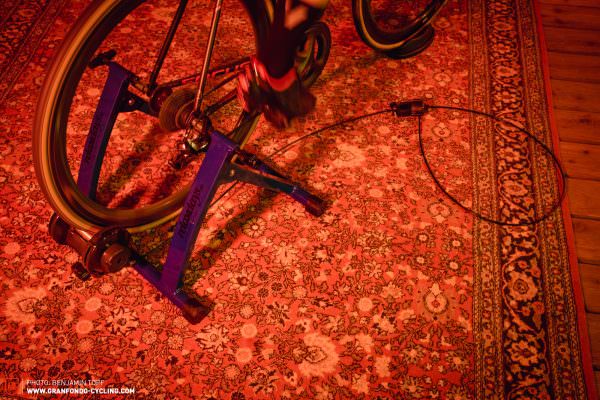
Fiddly assembly, too loud and uneven resistance – a complete fail!

A trainer isn’t smart just because the word “Smart” appears in its name. That term only means something when the resistance is controlled by Zwift and doesn’t have to be adjusted manually.
The best smart trainer of 2020

After more than four weeks of daily riding, numerous lunch rides, FTP tests and, to the detriment of all our colleagues, sweat literally dripping down the windows of our office, the winner is obvious. The Wahoo KICKR CORE stands out from the competition and cements the test win in our group test of the best trainers of 2020. Why? This direct drive smart trainer is suited to both beginners and experienced Zwifter, whether they want to have fun or train effectively. The ride is very good, the trainer is quiet and the overall concept is coherent. In addition the Wahoo KICKR CORE is the only smart trainer in our test that is compatible with basically every bike. It’s the perfect package for nearly everyone.

The Tacx NEO 2T Smart offers the most natural ride feel in this test. It scores with well-judged flex and also looks good and impresses with innovative features like the surface simulation. However, ultimately the issues with compatibility cost it the test victory.
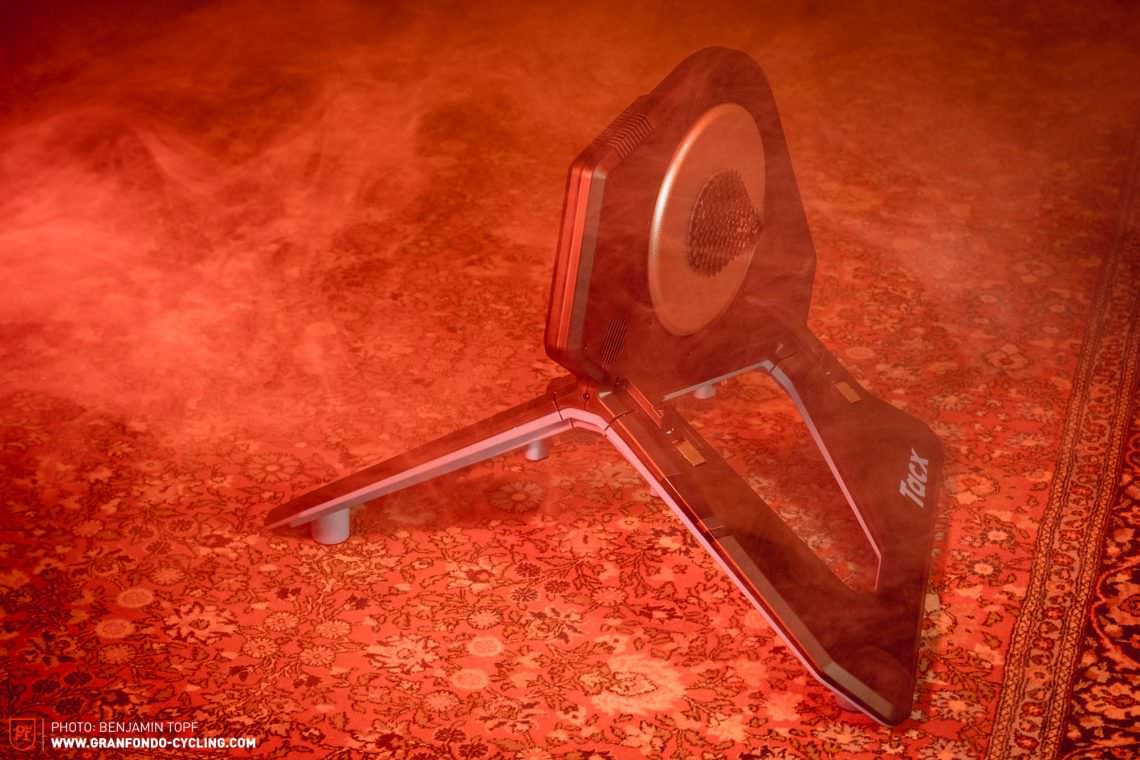
The Wahoo KICKR BIKE convinced us with the highest level of Zwifting fun in the test, countless possibilities for adjustment, unique features and a stable platform. However, it remains a luxury solution that requires a lot of space and isn’t suited to everyone.

If you’re a purist and care most about a natural ride feel, you’ll find a smart solution in the Elite Nero roller. However be aware that training on rollers is a completely different experience.

All turbo trainers in review
Elite Direto X | Elite Nero | Relaxdays Rollentrainer | Tacx NEO 2T Smart | Tacx Satori Smart | Wahoo KICKR BIKE | Wahoo KICKR CORE
Did you enjoy this article? If so, we would be stoked if you decide to support us with a monthly contribution. By becoming a supporter of GRAN FONDO, you will help secure a sustainable future for high-quality cycling journalism. Click here to learn more.
Words: Photos: Benjamin Topf, Jonas Müssig






